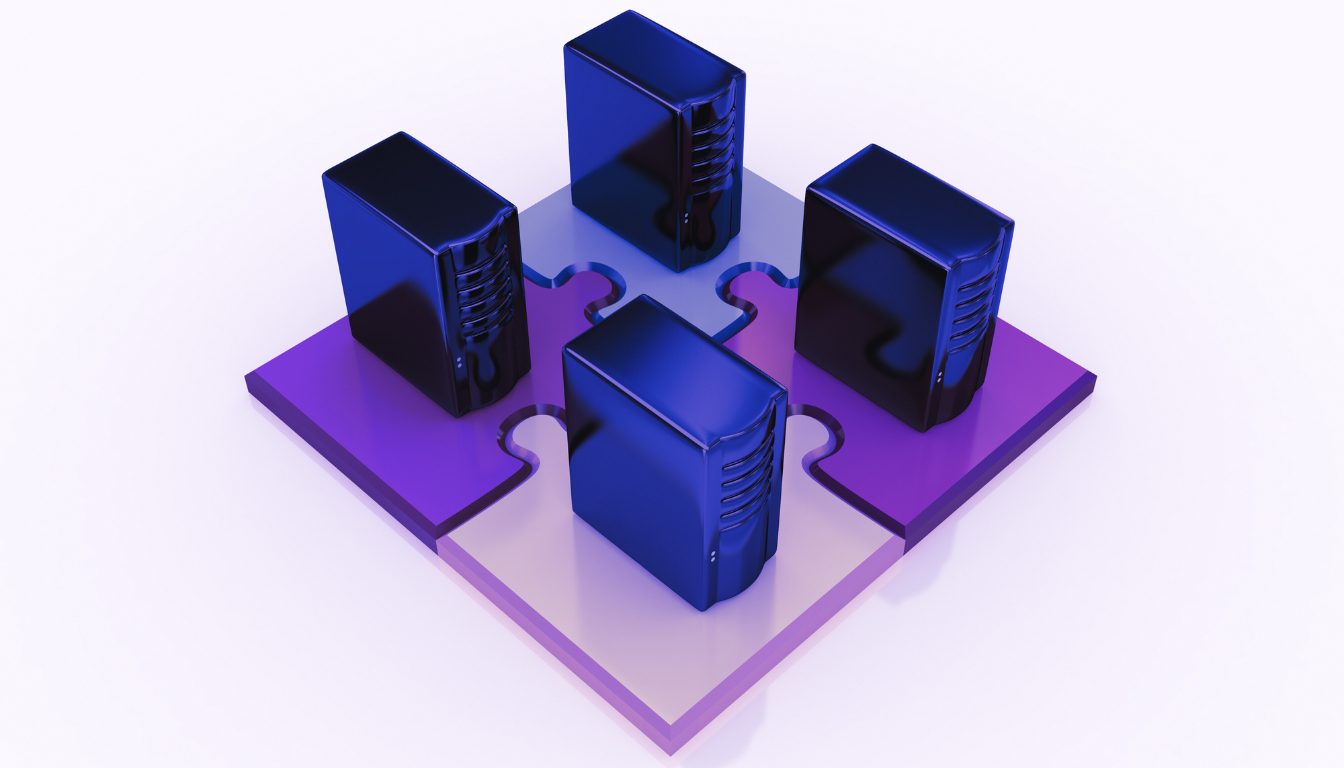
Unified Performance: CDN Interoperability and Emerging Standards
Post Author:
CacheFly Team
Categories:
Date Posted:
January 29, 2024
Follow Us:
Key Takeaways
- Understanding the concept of CDN Interoperability and its pivotal role in efficient content delivery.
- The significance of interoperability standards in facilitating smooth exchange and sharing of information between different systems.
- Exploring the concept of CDN federation as a collaborative effort to leverage the strengths of different networks for content delivery.
- Highlighting the IETF’s CDN Interconnection (CDNI) framework that enables CDNs to work together for broader content delivery.
As we delve into the digital transformation era, the demand for efficient content delivery is at its peak. Content Delivery Networks (CDNs) have emerged as a crucial component in this landscape, ensuring seamless content delivery across the globe. However, the ability of different CDN networks to interoperate—known as CDN interoperability—has become a key factor in realizing this efficiency. This blog explores CDN Interoperability, its role in media content distribution, and the importance of emerging standards in this context.
CDN Interoperability: A Key to Enhanced Content Delivery
CDN Interoperability refers to the ability of various CDN networks to work together seamlessly for efficient content delivery. This concept forms the backbone of media content distribution, enabling broader content delivery by allowing CDNs to work together. For instance, the ETSI TS 102 990 outlines use cases and requirements for interoperability between CDNs with different CDN-I, highlighting its key role in media content distribution.
But how do we ensure smooth functioning between these different systems? This is where interoperability standards come into play. These standards facilitate the exchange and sharing of information between disparate systems, ensuring smooth digital operations. As wellcome.org elaborates, interoperability standards enable the operational processes underlying the exchange and sharing of information between different systems.
As we move further into the realm of CDN Interoperability, we encounter the concept of CDN federation. This concept involves multiple, possibly competing, CDNs collaborating to deliver content, leveraging the strengths of different networks. The IETF’s CDN Interconnection (CDNI) framework introduced the concept of CDN federation, aiming to improve content delivery by enabling different CDNs to work together.
The IETF’s CDN Interconnection (CDNI) framework is crucial in facilitating CDN Interoperability. This framework enables the interconnection of CDNs, allowing them to collaborate and deliver content to end users on a broader scale. As outlined in the CDNI framework, it aims to facilitate the interconnection of CDNs, enabling broader content delivery and proving the importance of standards in CDN Interoperability.
Emerging Standards for Improved CDN Compatibility
Bringing CDN interoperability to life requires a set of industry standards. These standards, including protocols such as HLS, DASH, and others on the horizon, ensure improved compatibility between different CDN networks. They bridge the gap between various CDN technologies, fostering seamless collaboration and content delivery.
Role of Industry Standards in CDN Interoperability
Protocols like HLS (HTTP Live Streaming) and DASH (Dynamic Adaptive Streaming over HTTP) are fundamental to CDN interoperability. They standardize how media content is delivered, ensuring compatibility across different CDN networks. For instance, HLS uses HTTP-based technology to stream audio and video content, enabling delivery across various devices and platforms. Similarly, DASH adapts to network conditions to deliver the best possible media quality to the viewer, promoting efficient content delivery.
Guiding CDN Procurement: EBU’s Technical and Operational Requirements
Procuring the proper CDN can be a daunting task. The European Broadcasting Union (EBU) has outlined technical and operational requirements that guide CDN buyers in making informed decisions. These recommendations encompass security, performance, and reliability — key factors determining a CDN’s efficiency and effectiveness.
Open Caching Working Group: Streamlining Video Streaming Standards
The Streaming Video Alliance’s Open Caching Working Group is another significant player in shaping CDN interoperability standards. This group focuses on developing standards for streaming video, aiming to improve media delivery efficiency. It provides a common framework that ensures interoperability between different CDN providers, promoting efficient content delivery.
IETF’s Edge Architecture Specification: A New Communication Protocol
The Internet Engineering Task Force (IETF) has proposed an Edge Architecture Specification draft that can potentially revolutionize CDN interoperability. This draft highlights the use of HTTP SURROGATE-CAPABILITY and SURROGATE-CONTROL headers to communicate between interconnected CDNs. These headers facilitate the exchange of control information between CDNs, ensuring smooth operation and efficient content delivery.
Interoperable Networks and Standards: Building Blocks of Digital Future
As the digital landscape continues to evolve, the importance of interoperable networks and standards cannot be overstated. Standards like the CDN Interconnection (CDNI) framework by IETF are critical to ensuring smooth operation between different networks. They enhance content delivery’s overall performance and reach, thereby shaping our digital future. As outlined in the Internet Society report, these standards play a crucial role in driving digital transformation and optimizing the performance of content delivery networks.
HLS and DASH: Protocols Powering CDN Interoperability
HTTP Live Streaming (HLS) and Dynamic Adaptive Streaming over HTTP (DASH) are critical protocols that power content delivery in CDN interoperability. Let’s delve into these protocols to understand their role, how they work, and the potential advancements.
Defining HLS and DASH
HLS, developed by Apple, is an HTTP-based protocol that breaks down a live or on-demand stream into small HTTP-based file downloads. Each download is a short chunk of an overall potentially unbounded transport stream. On the other hand, DASH, an open standard, enables high-quality streaming of media content delivered from conventional HTTP web servers over the internet. Like HLS, DASH breaks down content into small segments, which are delivered to clients using HTTP.
The Importance of HLS and DASH in CDN Interoperability
Both HLS and DASH play a pivotal role in CDN interoperability. These protocols enable seamless streaming of media content across different platforms and devices. By standardizing content delivery, HLS and DASH ensure compatibility between various CDN networks. This compatibility is vital to achieving CDN interoperability, as it allows for seamless exchange and delivery of content.
Technical Aspects of HLS and DASH
HLS works by breaking down the stream into small HTTP-based file downloads. Each download loads one short chunk of an overall potentially unbounded transport stream. As the stream is played, the client can select from several alternate streams containing the same material encoded at various data rates, allowing the streaming session to adapt to the available data rate.
DASH, on the other hand, operates in a similar manner but with some key differences. It allows streaming services to be deployed using existing network infrastructure and commodity HTTP servers. DASH uses a manifest file, which provides information about the media streams and is used by the client to select and switch between streams.
Future of HLS and DASH
As technology continues to evolve, so will protocols like HLS and DASH. Future advancements will likely improve efficiency, reduce latency, and increase compatibility. For example, developing low-latency HLS (LHLS) and low-latency DASH (LL-DASH) aims to reduce the delay in delivering live video streams. As we look toward the future, it’s clear that HLS and DASH will continue to play a vital role in shaping CDN interoperability and standards.
Emerging Standards and Their Role in CDN Interoperability
As content demands expand across various devices, new standards play a crucial role in successful content delivery across different mediums. These emerging standards are the key to unlocking the full potential of CDN interoperability and standards.
The Need for Emerging Standards in CDN Interoperability
The digital landscape is evolving rapidly, and so are the requirements for content delivery. With the rise in the variety and volume of content and the increasing heterogeneity of devices, a pressing need for new standards in CDN interoperability exists. These standards are necessary to ensure smooth, efficient, and successful content delivery across different platforms.
Role of the Streaming Video Alliance’s Open Caching Working Group
Organizations like the Streaming Video Alliance’s Open Caching Working Group are pioneering the development of new standards. This group provides protocols, formats, and APIs to ensure interoperability between CDN providers. Their work is fundamental to enhancing CDN interoperability and standards, making the dream of seamless content delivery a reality.
IETF’s Draft on Edge Architecture Specification
Another noteworthy contribution to this field is the IETF’s draft on Edge Architecture Specification. This draft proposes using HTTP SURROGATE-CAPABILITY and SURROGATE-CONTROL headers for CDN intercommunication. This innovative CDN communication approach could potentially revolutionize how content is delivered, increasing efficiency and improving the overall user experience.
Guiding CDN Buyers with EBU’s Technical and Operational Requirements
Emerging standards not only impact CDN providers but also guide CDN buyers. The EBU’s technical and operational requirements for procuring CDN can prove invaluable for CDN buyers in making informed decisions. This source provides a comprehensive guide to the key factors buyers should consider when choosing a CDN, including the importance of CDN interoperability and adherence to emerging standards.
Emerging standards are shaping the future of CDN interoperability, paving the way for improved content delivery across various platforms and devices. As these standards continue to evolve, so does the potential for what can be achieved with CDN technology.
Shaping the Future: CDN Interoperability and the Digital Landscape
The future of CDN interoperability holds immense potential. With advancements in technology and the emergence of new standards, the content delivery landscape is set for a significant transformation. However, as with any technological progression, it also presents its challenges.
The Future of CDN Interoperability
The evolution of CDN interoperability and standards is a dynamic process. While we see significant advancements in the field, challenges persist—these range from compatibility issues between different CDN providers to increased network capacity and faster content delivery. However, these challenges can be overcome through strategic planning, adopting emerging standards, and continuous innovation.
Interoperable Networks and Standards: Shaping Our Digital Future
The importance of interoperable networks and standards in shaping our digital future cannot be overstated. Standards like the CDN Interconnection (CDNI) framework by IETF ensure smooth operation between different networks and enhance the overall performance and reach of content delivery. By facilitating seamless content distribution, these standards are pivotal in improving user experience and driving digital growth.
The Impact of Emerging Technologies on CDN Interoperability
Emerging technologies such as 5G, AI, and machine learning have the potential to influence CDN interoperability significantly. The high-speed data transfer capability of 5G could revolutionize content delivery, while AI and machine learning can help in intelligent traffic routing, anomaly detection, and predictive caching. When integrated with CDN networks, these technologies can significantly enhance content delivery mechanisms, making them more efficient and responsive.
The Role of CDN Buyers in Shaping the Future of CDN Interoperability
CDN buyers play a crucial role in shaping the future of CDN interoperability. Informed decision-making and strategic planning can help drive advancements in CDN interoperability. By prioritizing interoperability and adherence to standards in their procurement process, CDN buyers can contribute to the evolution of the CDN landscape. This not only benefits their own content delivery needs but also drives industry-wide progression towards improved CDN interoperability.
As we look towards the future, the role of CDN interoperability and standards in our digital landscape becomes increasingly evident. With the integration of emerging technologies and the adoption of new standards, the future of content delivery is set to be more efficient, responsive, and user-centric than ever before.
Product Updates
Explore our latest updates and enhancements for an unmatched CDN experience.
Book a Demo
Discover the CacheFly difference in a brief discussion, getting answers quickly, while also reviewing customization needs and special service requests.
Free Developer Account
Unlock CacheFly’s unparalleled performance, security, and scalability by signing up for a free all-access developer account today.
CacheFly in the News
Learn About
Work at CacheFly
We’re positioned to scale and want to work with people who are excited about making the internet run faster and reach farther. Ready for your next big adventure?




